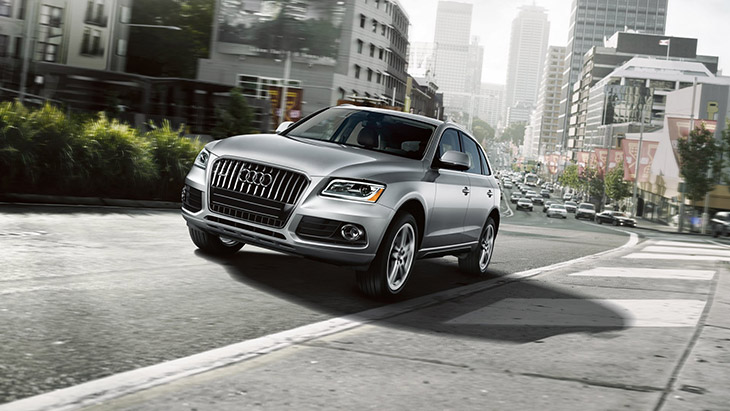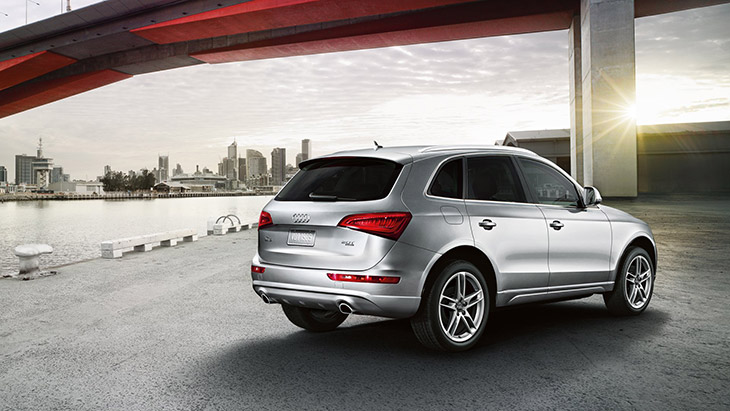 The 2016 Audi Q5, when equipped with the available Driver Assistance package and produced after January 2015, has earned the rating of Top Safety Pick+, the highest 2015 rating available from the Insurance Institute of Highway Safety (IIHS). The 2016 Q5 recently underwent the IIHS Small Overlap Front Crash test and received the highest possible rating of “good”.
The 2016 Audi Q5, when equipped with the available Driver Assistance package and produced after January 2015, has earned the rating of Top Safety Pick+, the highest 2015 rating available from the Insurance Institute of Highway Safety (IIHS). The 2016 Q5 recently underwent the IIHS Small Overlap Front Crash test and received the highest possible rating of “good”.
The versatile Q5 is the Audi brand’s top-selling model. It features fully galvanized steel unibody construction with an aluminum hood and tailgate, demonstrated in the model’s “good” ratings in all of the Institute’s crashworthiness tests. The Audi brand’s focus on elevating standards for automotive engineering addresses evolving criteria for consumer crash tests as designated by the IIHS.
The available Driver Assistance package, when equipped, earns the Audi Q5 an Advanced rating for front crash prevention. The Driver Assistance package includes Audi braking guard, adaptive cruise control with stop & go functionality, Audi dynamic steering and drive select controls. The package is available on select Audi Q5 models equipped with the 3.0L TFSI and 3.0L TDI engines.
An available award-winning 3.0L TFSI® supercharged engine delivers a powerful 272 horsepower and 295 lb-ft of torque, and the fuel efficient 2.0L TFSI engine is standard as the entry to the Q5 model line. Also available are a 3.0L TDI® clean diesel engine as well as the Q5 2.0L TFSI hybrid. All engine variants are offered with standard quattro® all-wheel drive for superior traction and handling.

The successful Q5 model line offers standard xenon plus headlights with LED daytime running lights and a power tailgate. For 2016, Audi connect has been added to the Navigation Plus package for Premium models. Premium Plus models now feature a Bang & Olufsen® Sound System with the Technology package.
IIHS Top Safety Pick Ratings
IIHS tests evaluate two aspects of safety: crashworthiness — how well a vehicle protects its occupants in a crash — and crash avoidance and mitigation — technology that can prevent a crash or lessen its severity.
To determine crashworthiness, IIHS rates vehicles good, acceptable, marginal or poor, based on performance in five tests: moderate overlap front, small overlap front, side, roof strength and head restraints. In the area of crash avoidance and mitigation, IIHS assigns vehicles with available front crash prevention systems ratings of basic, advanced or superior, based on the type of system and performance in track tests.
Source: Audi